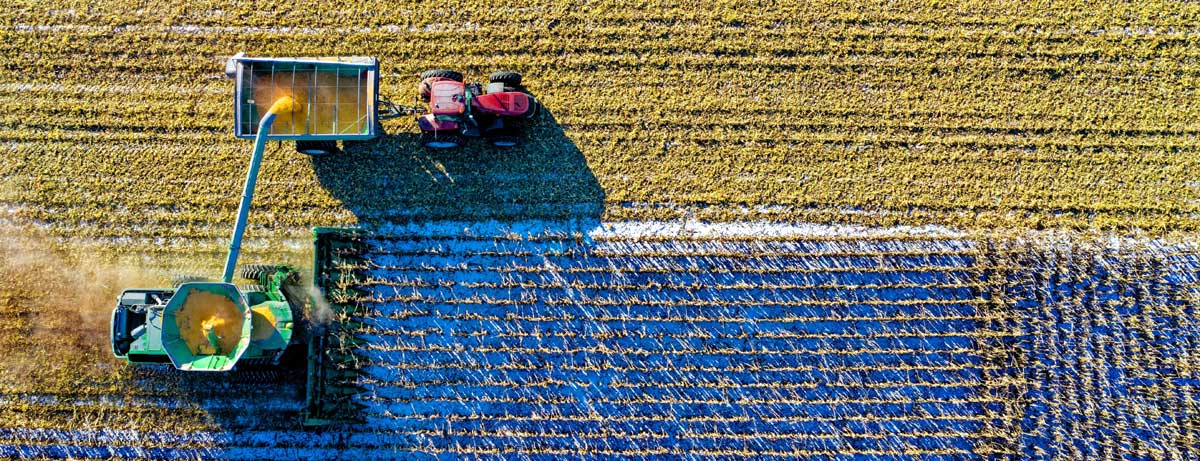Climate change, declining water resources, rising input costs, and growing pest resistance are just some of the factors reshaping the agricultural landscape. As a result , farmers of all sizes face changing weather patterns, drought, tighter profit margins, and hardy weeds and insects that pose significant challenges to their operations. These shifts demand a dynamic approach to agriculture, where decisions concerning planting, harvesting, and resource management must be made with a keen understanding of evolving climate conditions. Technologies that offer real-time weather data and climate trend analysis can empower farmers to make informed decisions, ensuring both crop resilience and productivity amidst changing weather patterns.
Artificial Intelligence (AI) is rapidly emerging as a transformative force in agriculture. AI-powered tools are revolutionizing various aspects of farming practices, from weather forecasting to crop health assessment, enabling farmers to make smarter, data-driven decisions. These technologies not only enhance agricultural productivity but also pave the way for more sustainable farming practices by optimizing resource use and reducing waste.
Key AI Applications in Agriculture:
Weather Forecasting AI
AI-driven weather forecasting models are crucial for optimal crop planning and management. These models provide farmers with highly accurate and localized weather forecasts, enabling them to make informed decisions about planting schedules, irrigation timing, and pest control strategies.
Image Recognition and Health Assessment
AI-powered image recognition tools provide valuable insights into crop and soil health. These tools analyze images of crops captured using drones or handheld devices to identify signs of stress, disease, or nutrient deficiencies. The insights gained from these tools allow farmers to implement targeted treatment strategies, preventing widespread crop losses and optimizing resource utilization.
Precision Agriculture Tools
AI-driven predictive analytics tools enable precision agriculture, optimizing various aspects of farming practices. These tools analyze real-time data from sensors deployed in fields to provide farmers with actionable insights into soil moisture levels, nutrient requirements, and crop growth patterns. This information enables farmers to tailor irrigation, fertilization, and pest control strategies to specific areas of the field, maximizing resource efficiency and crop yields.
Automation via Computer Vision and Robotics
The integration of computer vision and robotics in agriculture automates routine tasks, enhancing efficiency and precision. Computer vision-powered robots can perform tasks such as weeding, harvesting, and sorting crops, reducing labor costs and improving productivity.
Satellite Imagery for Pest Control
Satellite imagery plays a crucial role in early pest detection and management. High-resolution satellite images provide a broad and accurate view of crop health across vast areas, enabling farmers to identify and address pest infestations promptly, minimizing crop losses and protecting the environment from excessive pesticide use.
Some Barriers to AI Implementation:
While AI holds immense promise for transforming agriculture, its implementation faces several barriers. Barriers include complex agricultural economics, lack of training data, system costs, data security, and data storage needs. Some challenges include:
Diversity in Agriculture:
Tailoring AI solutions to suit the diverse agricultural landscape and farming practices across different regions, crop types, and scales of operation is a significant challenge. AI models need to be adapted to local conditions and farming practices to be effective.
Lack of Training Data
Building effective AI models for agriculture requires a substantial amount of diverse training data. Collecting and labeling large datasets of high-quality agricultural data can be a time-consuming and expensive endeavor.
Cost and Infrastructure
The financial and infrastructural demands of implementing AI in agriculture can be significant barriers, especially for small-scale farmers. Access to reliable internet connectivity, computing resources, and technical expertise is often limited in rural areas.
Data Security Concerns
Ensuring data privacy and security is critical for the widespread acceptance and success of AI in agriculture. Farmers need to be confident that their data is being handled securely and responsibly to prevent unauthorized access or misuse.
Success will demand customized, cost-effective, and secure AI solutions that are accessible to farmers across various scales of operation and will require the development of AI models that are tailored to specific agricultural practices, crops, and regions. Additionally, educating farmers on the strengths (as well as the limitations) of AI apps is important; this is especially true considering that they will play an important role in the collection and labeling of high-quality agricultural data that will be needed to design the next generation of AI centered ag solutions.

